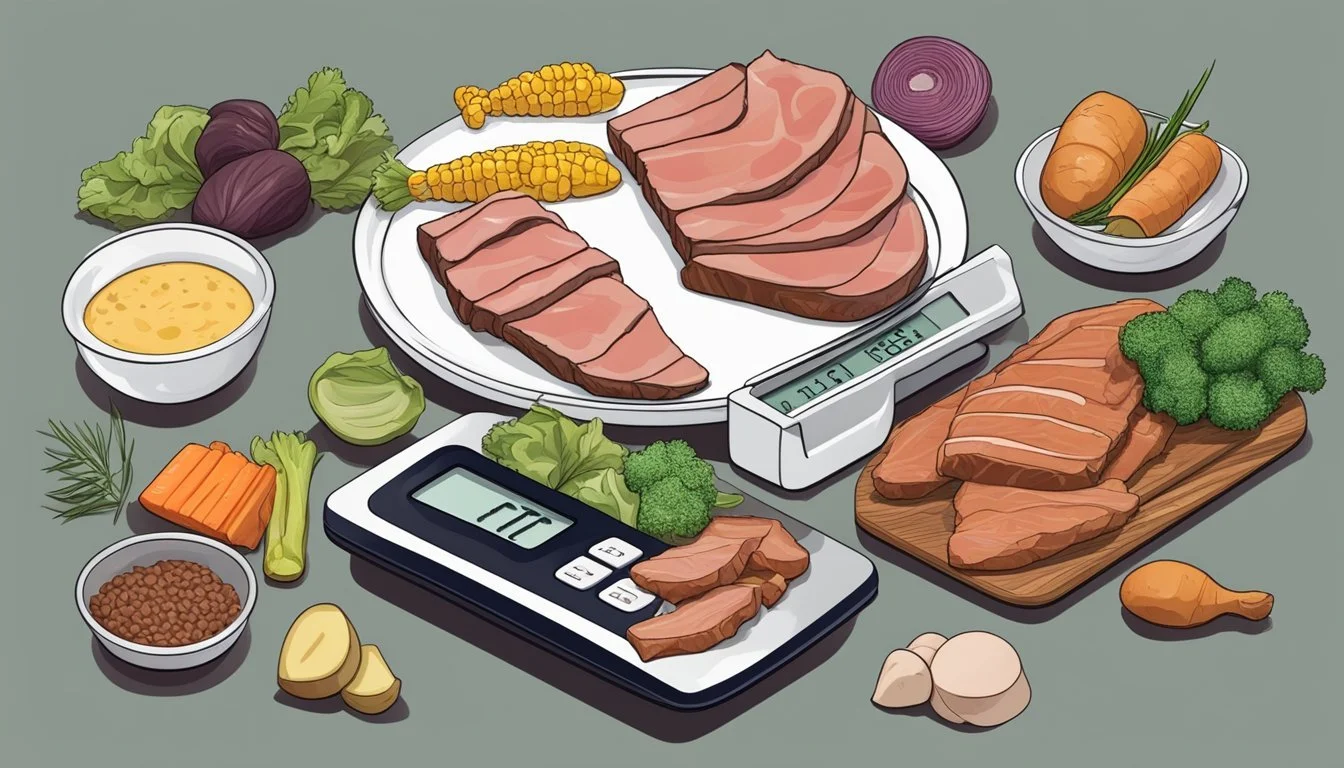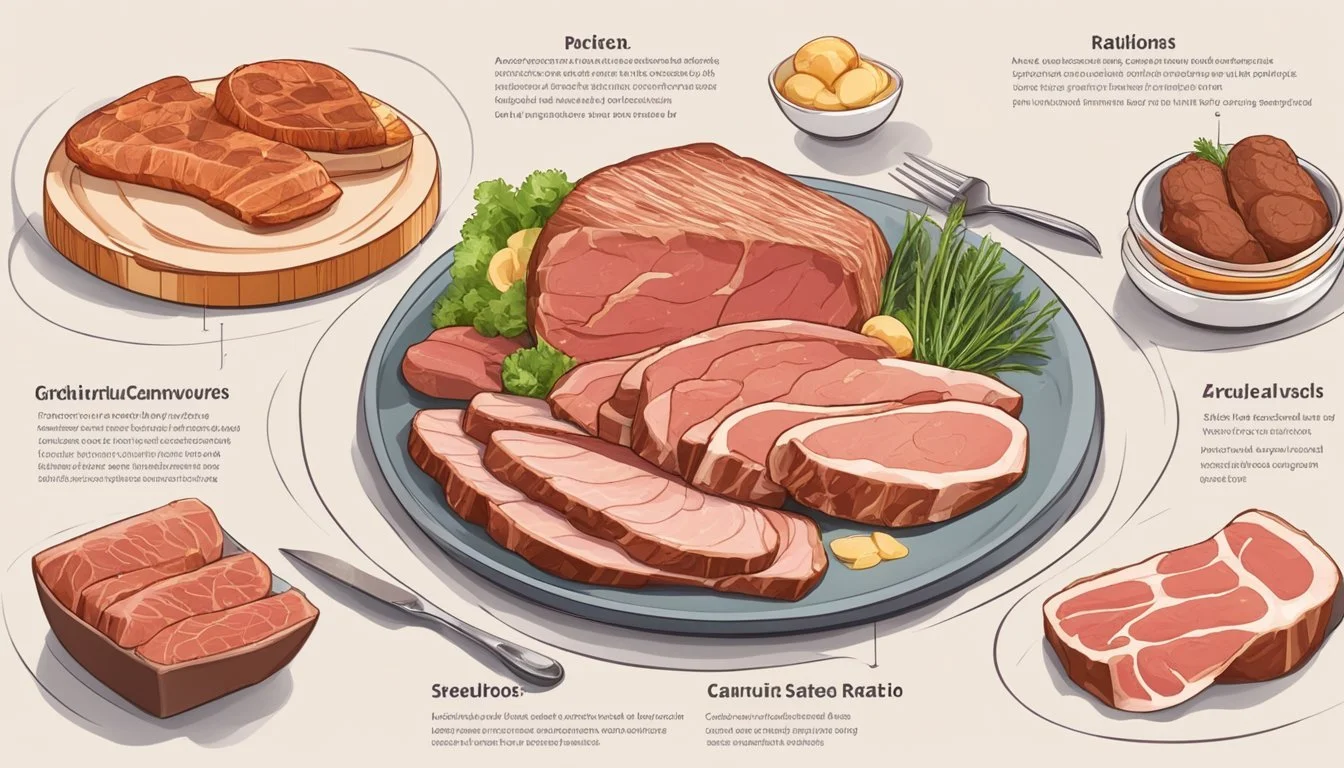How to Manage Your Macros on a Carnivore Diet
Essential Tips for Balance
Managing macros on a carnivore diet revolves around understanding the unique nutritional framework that this diet entails. The carnivore diet is characterized by the consumption of animal products exclusively, eliminating carbohydrates typically found in plant-based foods. This approach means that macronutrients are primarily sourced from fat and protein, with a negligible amount, if any, coming from carbohydrates. Individuals following this dietary pattern need to be mindful of the balance between fat and protein to ensure they meet their energy and nutritional needs while adhering to the diet's principles.
The macronutrient ratio in a carnivore diet typically mirrors that of a high-protein ketogenic diet, with a substantial portion of daily calories coming from fats. Fat can account for approximately 70-80% of total intake, while protein comprises around 15-30%, allowing for moderate flexibility within these ranges based on personal goals and activity levels. Carbohydrates are minimal to non-existent, often not exceeding 5% of total caloric intake, which may incidentally occur from trace amounts found in certain animal-based foods.
Catering to the body’s requirements on a carnivore diet involves selecting nutrient-dense, fatty cuts of meat, incorporating animal fats like butter and tallow, and potentially including dairy, although it should be limited due to its carbohydrate content. Tracking these macros becomes critical for individuals aiming for specific health outcomes, whether for weight management, athletic performance, or overall wellbeing. By prioritizing the right balance of fatty and protein-rich foods, one can manage a carnivore diet effectively.
Understanding Carnivore Diet Macros
The Carnivore Diet focuses on high protein and fat intake with minimal to zero carbohydrate consumption, targeting specific macronutrient ratios for health benefits and energy sustainability.
Macro Ratios on a Carnivore Diet
The success of a Carnivore Diet significantly hinges on understanding and maintaining the correct macronutrient ratio. Typically, 70-80% of calories should come from fat, while 15-30% of calories are sourced from protein. Carbohydrates are nearly eliminated, constituting 0-10% of the total caloric intake. This macronutrient breakdown encourages the body to enter a state of ketosis, using fat as the primary energy source.
Fats: 70-80% of total calories
Proteins: 15-30% of total calories
Carbohydrates: 0-10% of total calories
The Role of Protein in Muscle Maintenance
Protein is paramount for muscle maintenance, especially for individuals engaging in regular physical activity. Proteins are made up of amino acids, which are essential for repairing and building muscle tissue. On the Carnivore Diet, an adequate protein intake prevents muscle loss and supports muscle mass retention. For a moderately active adult, consuming 112-154 grams of protein per day is a common guideline, depending on body weight and individual needs.
Navigating Fat Intake for Optimal Energy
Fat serves as the cornerstone of the Carnivore Diet, providing the bulk of daily caloric needs. It's vital for achieving satiety and energy. An individual should aim for a fat intake making up 50-60% of their total caloric intake, although this can vary based on personal goals and energy demands. Fatty cuts of meat, saturated fat, and animal fat like tallow and butter are typically included to meet these needs. Incorporating various meats and fats also helps in maintaining a balance of nutrients.
Fat intake recommendation: 50-60% of total caloric intake
Sources of fat: Fatty meats, butter, tallow
Skip the lines and order your ghee and tallow online for a stress-free shopping experience!
Food Selections on a Carnivore Diet
Managing macronutrients effectively on a carnivore diet involves making informed choices about the types of animal foods consumed. Each selection plays a role in delivering essential nutrients to support overall health.
Prioritizing Meat Types and Cuts
A carnivore diet is centered around meat consumption. Ribeye steak (What wine goes well with ribeye steak?) and ground beef are popular options as they provide a rich source of protein and fat, essential for meeting daily macronutrient goals. Pork belly (What wine goes well with pork belly?) and bacon are fatty meat selections that contribute to the diet's high fat intake. Consumers should focus on:
Fatty cuts of meat for fat intake (~50-70% of calories)
Leaner meats and cuts for protein requirements (20-35% of calories)
Inclusion of Dairy and Eggs
Dairy products such as butter, cheese, milk, and yogurt can be included for variety and additional sources of fat. Since dairy also contains proteins and carbohydrates in the form of lactose, it is essential to consider these macronutrients when planning meals. Eggs are a staple in the carnivore diet, offering high-quality protein, fats, and a wealth of vitamins and minerals. When adding dairy and eggs:
Use butter liberally for cooking and added fats
Choose full-fat dairy products and aged cheeses (What wine goes well with aged cheeses?) for lower lactose content
Incorporate eggs daily for a complete protein source
The Place of Seafood and Organ Meats
Seafood such as salmon and oysters provides beneficial omega-3 fatty acids, vitamins, and minerals. Organ meats, especially liver—with beef liver being a standout—are nutrient-dense components of a carnivore diet, offering virtually all the essential nutrients needed by the body. These selections are highly encouraged as they:
Provide vital nutrients not as abundant in muscle meats
Are excellent sources of vitamins A, D, E, and K, as well as minerals like iron and zinc
Nutritional Targets and Health Goals
When an individual embraces the carnivore diet, aligning macronutrient intake with personal health goals is vital. This precision helps in managing body weight, body composition, and overall health.
Setting Personal Macronutrient Goals
Each person’s macronutrient needs can differ, with factors such as body weight, goals for muscle gain or weight loss, and optimal health taking center stage. One's caloric intake should reflect these needs. For instance, a ratio of 50-75% fat, 20-35% protein, and 0-5% carbohydrates might constitute their dietary framework. These ratios help in fueling the body while also maintaining or altering body composition according to one's health goals.
Weight Management: Loss and Gain
For weight loss, creating a caloric deficit by reducing overall calorie intake may be effective while maintaining a high protein percentage to support muscle mass. Conversely, for weight gain, particularly in muscle, an increase in calorie intake, alongside resistance training, will be necessary. Individuals should monitor changes in body fat percentage and consider adjustments if they hit a plateau.
Considering Activity Level and Lifestyle
Activity level dramatically influences macronutrient needs. A sedentary individual requires fewer calories for fuel compared to an active person or workout enthusiast. Therefore, the latter may need a higher intake of calories and protein to support their increased energy expenditure and recovery needs. Adjusting macronutrient distribution in accordance with changes in activity level is key to sustaining optimal health and progress towards targeted physical outcomes.
Tracking and Adjusting Macros
Effective management of macros on a carnivore diet involves consistent tracking and making informed adjustments. This ensures one meets their health goals, whether it's for weight loss, maintenance, or building muscle, while adhering to the diet's macronutrient ratios.
Leveraging Tech: Apps and Calculators
Apps and macro calculators are indispensable tools for those following a carnivore diet. They can simplify the process of logging food intake and calculating macros. Users input their target calories, body weight, and activity level into a calculator to receive their recommended intake of fats, proteins, and carbohydrates. These digital solutions often come with extensive food databases, making food tracking more efficient.
Example:
Fat: 70-80% of total caloric intake
Protein: 20-30% of total caloric intake
Carbohydrates: 0-5% of total caloric intake
Manual Tracking Methods
For individuals who prefer traditional methods or wish to have a better understanding of their food choices, manual tracking can be an effective strategy. This often involves keeping a food diary or using spreadsheets. One should note the type of meat consumed, its weight, and calculate the macros based on nutritional data from reliable sources.
Sample Food Diary Entry:
Meal: Ribeye Steak
Weight: 200g
Fat: 22g
Protein: 50g
Carbs: 0g
Adjusting Macros Based on Progress
Adjusting macros is crucial for aligning with one's evolving health goals. Monitoring progress through regular check-ins on weight and energy levels can indicate whether an increase or decrease in certain macros is necessary. For instance, an increase in protein may be needed for muscle gain, whereas an increase in fats could support weight loss if caloric intake remains controlled. The key is to make incremental changes and gauge the body's response over time.
Health Considerations and Potential Pitfalls
Embarking on a carnivore diet requires careful consideration of nutrients to maintain optimal health while managing the adaptations your body undergoes. It's essential to recognize potential deficiencies, symptoms associated with dietary transition, and strategies for long-term health and disease prevention.
Addressing Common Deficiencies
A carnivore diet primarily consists of animal products, which can lead to deficiencies in certain vitamins and minerals typically found in plant foods. To counter potential shortages, one should ensure adequate intake of fat-soluble vitamins such as Vitamin D and Vitamin K, which are critical for bone health and blood coagulation respectively. Additionally, it's crucial to monitor levels of vitamins such as Vitamin C and electrolytes like magnesium and potassium to avoid common deficits.
Vitamins: Include organ meats for a broad spectrum of vitamins.
Minerals: Opt for bone broths and sea salts to replenish electrolytes.
Managing Dietary Transition Symptoms
Individuals may experience symptoms such as diarrhea, temporary hormone fluctuations, or an initial increase in inflammation as the body shifts away from using glycogen and starts producing ketones for energy. To alleviate these symptoms:
Diarrhea: Gradually increase fat intake to allow the digestive system to adapt.
Hormones: Monitor and consult with a healthcare provider to manage changes.
Inflammation: Stay hydrated and rest to support the body during adaptation.
Long-Term Health and Disease Prevention
While research on the long-term impact of a carnivore diet is limited, concerns such as the risk of protein poisoning (rabbit starvation) and the absence of fiber need to be considered. Balancing fat and protein intake is vital to prevent excessive reliance on protein for energy. The adequate consumption of fats promotes the production of necessary ketones, preserves insulin sensitivity, and supports an optimal hormonal balance. Regular monitoring of biomarkers can help prevent diseases and maintain optimal health.
Fat to Protein Ratio: Aim for a high fat, moderate protein intake to achieve desired ketone levels.
Fiber: While controversial in a carnivore context, some advocate for the inclusion of fibrous animal products to support digestive health.
Sleep and Stress Management: Prioritize good sleep hygiene and stress reduction to bolster overall health and disease prevention.
Myths and Misconceptions
This section confronts common myths surrounding the carnivore diet, providing clarity on protein consumption, differentiating it from the keto diet, and addressing ethical and sustainability concerns.
Debunking 'Too Much Protein' Myth
The fear that a carnivore diet leads to protein poisoning because of excessive protein intake is unfounded. Protein requirements vary, but an average person typically consumes between 112-154 grams of protein per day without adverse effects. The body is able to handle significant amounts of protein, and it’s vital to understand that protein intake should match one's lifestyle and activity level.
Carnivore vs. Keto: Clarifying Differences
While both the carnivore diet and ketogenic diet are low-carb, their macro ratios differ:
Keto
Fat Percentage: 70-80%
Protein Percentage: 15-30%
Carbs Percentage: 5-10%
Carnivore
Fat Percentage: 50-75%
Protein Percentage: 20-35%
Carbs Percentage: 0-5%
The ketogenic diet often includes plant foods and sometimes fruit as part of the small carbohydrate allowance, while the carnivore diet is often strictly animal products, aligning with zero carbs principles.
Addressing Sustainability and Ethical Concerns
Critics often flag the carnivore diet for lacking in sustainability and ethical practices. However, it is essential to acknowledge that sustainability and ethics are complex and multifaceted issues that involve the entire food production system, not just a single dietary choice. Sustainable farming methods and ethical animal husbandry practices are continually evolving to address these concerns.
Final Thoughts
Managing macronutrients on a carnivore diet is a straightforward process if individuals understand their own dietary requirements. They should consult with a dietitian to tailor recommendations suited to their health goals.
Protein: Typically constitutes 20 to 35 percent of caloric intake. Sources include beef, chicken, fish, and eggs.
Fat: Should account for about 50 to 75 percent of the diet. Fatty cuts of meat and animal fats are essential.
Carbohydrates: Kept to an absolute minimum, usually not exceeding 5 percent, primarily from dairy if included at all.
The emphasis is on fatty meats and a range of animal products to keep carb intake low while meeting energy and nutritional needs. It is crucial for adherents to be mindful of:
Hydration: Sufficient water intake is critical since a high-protein diet can increase demand for fluids.
Micronutrients: They must ensure they are achieving a full complement of necessary vitamins and minerals, as plant-sourced nutrients are absent.
By integrating expert advice with self-monitoring, individuals can successfully manage their macronutrient intake to support their lifestyle while on a carnivore diet. The approach should remain adaptive and responsive to the body's signals and changes in activity levels. Regular assessment through blood work and physical check-ups can ensure continued health and nutrition adequacy.






